
Introduction from the New Outlook Editor

William J. Sieber, PhD
I appreciate the opportunity to serve SBM in this capacity as Editor for Outlook. I hope to stimulate and support its use by members as a useful forum to communicate within and across SBM SIGs. I especially hope to promote it as a vehicle for sharing our visions and plans for future activities in order to maintain our position of being at the leading edge of professionals promoting “better health through behavior change”.
President's Message

Dawn K. Wilson, PhD
Behavior Matters: The Impact and Reach of Behavioral Medicine
It is with great pleasure that I begin my term as the 35th President of the Society of Behavioral Medicine. I came back from the Annual Meeting in San Francisco energized and excited about the innovative advances that our SBM members presented throughout the conference. After reflecting on the conference I decided to highlight some key research in my President’s Message as a means for disseminating timely findings that are innovative and which have potential for high impact and reach.
In particular, SBM researchers have continued to make strong advances in the policy area and the presentation on “Early Evidence that Policy Changes are Working to Reduce Children's Obesity Levels and Daily "Energy Gaps": Lessons Learned for Future Research” left me really encouraged about the gains we are making in this critical area. Organized by the Robert Wood Johnson Foundation (Authors: C. Tracy Orleans, PhD, Robert Wood Johnson Foundation; Tina J. Kauh, PhD, Robert Wood Johnson Foundation; Amy E. Woodrum, Robert Wood Johnson Foundation; Claire Wang, MD, ScD, Columbia University; James F. Sallis, PhD, University of California, San Diego, Active Living Research; Laura C. Leviton, PhD, Robert Wood Johnson Foundation; Neel Koyawala, Robert Wood Johnson Foundation; Diego Reinero, Robert Wood Johnson Foundation; and Marjorie A. Gutman, PhD, Gutman Research Associates), this session focused on progress in discovering, applying and evaluating interventions with the potential to halt or reverse rising trends in youth obesity and to address disparities in its prevalence and health tolls—highlighting SBM members’ contributions to this work (see Figure 1 below).
Fig. 1 Promising declines in childhood obesity. Source: Robert Wood Johnson Foundation.
This presentation highlighted that after three decades of climbing steadily, childhood obesity levels appear to be leveling off in response to media coverage and broad-spectrum school- and community-based policy/environmental strategies to raise children’s everyday levels of physical activity and lower their intake of high-calorie, non-nutritive foods and beverages – reducing the cumulative small daily “energy gaps” (surpluses of calories consumed over those expended) which produced the epidemic over a period of 30-40 years. The panel focused on declines in childhood obesity levels recently reported by cities and states across the country following the implementation of comprehensive (i.e., multi-component) strategies, including state-wide restrictions on high calorie snacks and beverages in school or the creation of joint use agreements for community use of school recreational facilities during non-school hours (see Figure 2 below).
Fig. 2 Steep rise in research to discover policy/environmental solutions. Source: Sallis et al., Annals of Behavioral Medicine, 2013.
Presenters in this session portrayed the growing number of state and city-wide successes as hopeful signs that the epidemic can be reversed, and highlighted unique opportunities to learn more about what it will take to achieve further progress in halting or reversing childhood obesity levels overall and in high-risk socioeconomic and racial/ethnic populations. For instance, California (the site of this year’s SBM meeting) offers enormous research opportunities – both because childhood obesity levels declined statewide, and because wide variability across the state – with falling rates in some counties and rising rates in others – affords the chance to identify critical ingredients for positive change. Philadelphia, the site of next year’s meeting, also was singled out for showing that economically-challenged communities with high rates of childhood obesity can not only reduce their rates overall, but do so in a way that helps to close the disparities gap. In response to broad cross-sector efforts, obesity levels fell city-wide among Philadelphia’s K-12 public school students, with largest improvements among African American boys and Hispanic girls. Panelists concluded that these declines in BMI have temporal associations with policy and environmental changes that likely affect the balance of calories-in and calories-out, and which help us narrow our focus onto the pool of interventions that are both powerful enough to merit further tests and feasible for many communities to employ. Panelists recommended improved measurement of intervention elements and outcomes, introduced a new “caloric calculator” for estimating intervention effects on children’s average daily “energy gaps”, and closed with recommendations for translating breakthrough research results and recommendations to policy makers and community leaders.
Given the theme on technology this year, also I found the presentation of C. Barr Taylor, MD, Stanford University School of Medicine, “Using Technology for Prevention in Defined Populations: Body Image, Obesity, and Eating Disorders” extremely innovative. His work provides a model for how technology can increase the reach of evidence-based interventions to provide combined universal, targeted/selected and indicated interventions to defined populations and increase relevance by tailoring programs to individual needs. He notes the need for behavioral science researchers to focus on outcomes in populations, to use new models for more rapid program development, revision and implementation and to use technology strategically, recognizing where links to “off-line” approaches are key.1, 2, 3 In particular, these population approaches that integrate technology into community-based contexts -such as his work in college students and school-based populations- have the potential to make national and international impact on improving health behaviors at a population level (see his full 2013 Annual Meeting presentation slides for specific examples of his work).
The research presentations that I have highlighted here are just a few examples of the high impact and reach related efforts that will continue to provide the scientific base for policy, public health and health care reform efforts in the coming year. As President it is my goal to not only broaden our visibility as a scientific community but to partner with leading organizations that are already at the forefront of influencing national policy. So stay tuned for more exciting updates as our policy leaders on the SBM board continue to build on SBM strengths in these areas over the coming months.
Look for monthly updates on exciting advances as I continue to add research contributions of SBM members each month and provide updates on expanding our strategic plans for partnering with like-minded organizations on health policy issues. Our Program Committee Chair Elliot J. Coups, PhD, is already working hard on planning for an outstanding 35th Anniversary Program for the Society of Behavioral Medicine to be held in Philadelphia, on April 23-26, 2014. Given our theme is “Behavior Matters: The Impact and Reach of Behavioral Medicine” we have already lined up fantastic speakers in such areas as health economics and translation of evidence-based interventions. Look for on-going updates each month here on the SBM website President’s Message.
I welcome your thoughts and input on the activities in the coming months and I highly recommend joining our society if you are not already a member. You will receive Annals of Behavioral Medicine and Translational Behavioral Medicine as part of your membership benefits, which are two very visible journals in the field. If you want to be more involved in our society please contact us and we will assure that opportunities are provided for you.
All the Best,
Dawn K. Wilson, PhD
President
References
- Taylor CB, Bryson S, Luce KH, Cunning D, Celio A, Abascal LB, Rockwell R, Dev P, Winzelberg AW, Wilfley DE. Prevention of eating disorders in at-risk college-age women. Archives of General Psychiatry, 2006, Aug, 63:831-8. PMID: 22137366
- Jones M, Luce K, Osborne MJ, Taylor K, Cunning D, Doyle AC, Wilfley DE, Taylor CB. A randomized controlled trial of an internet-facilitated intervention for reducing binge eating and overweight in adolescents. Pediatrics, 2008,Mar;121(3):453-62.
- Taylor CB, Taylor K, Jones M, Shorter A, Yee M, Genkin B, Burrows A, Kass AE. Rizk M, Redman M, Romer P, Williams J, Wilfley DE. Obesity prevention in defined (high school) populations, International Journal of Obesity Supplements, 2012, 2, S30–S32; doi:10.1038/ijosup.2012.8
Award Winners
Congratulations to the following 2013 Society of Behavioral Medicine Achievement Award Winners!

Alere Wellbeing Research to Practice Award
Saul Shiffman, PhD
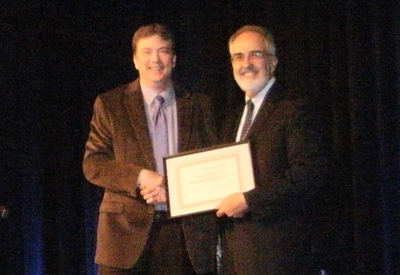
Distinguished Research Mentor Award
Michael G. Perri, PhD
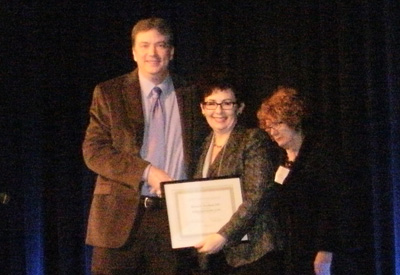
SBM Distinguished Scientist Award
Karina W. Davidson, PhD
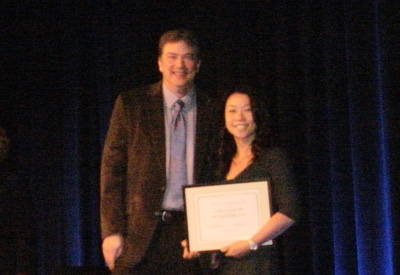
Early Career Investigator Award
Janet Tomiyama, PhD

Early Career Investigator Award
Odette Wegwarth, PhD
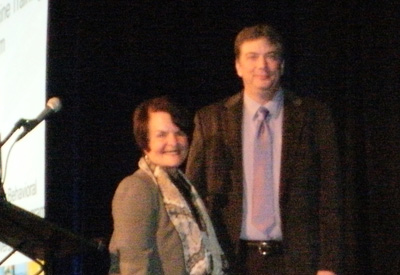
Excellence in Behavioral Medicine Training Program Award
Training in Research for Behavioral Oncology and Cancer Control program housed at the Indiana University School of Nursing in Indianapolis

Outstanding Dissertation Award
Carmina Valle, PhD, MPH
Distinguished Student Award for Excellence in Research
Laramie R. Smith, MA
Rachel A. Millstein, MHS, MS
Distinguished Student Award for Excellence in Service Delivery
Katherine L. Taylor, MPH
Distinguished Student Award - Travel Scholarship
Afton M. Koball, MA
Angela M. Legg
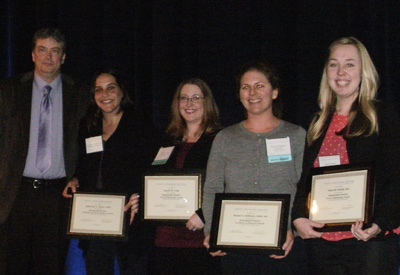
Distinguished Student Awardees
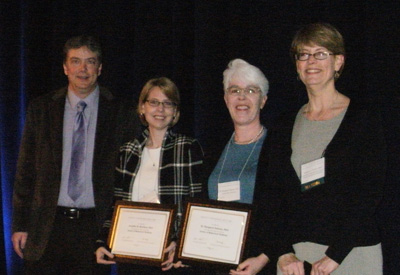
New SBM Fellows
M. Margaret Dolcini, PhD
Jennifer B. McClure, PhD
Suzanne C. Segerstrom, PhD
Kathryn L. Taylor, PhD
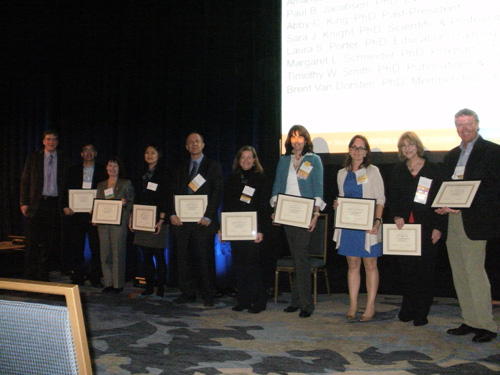
C. Tracy Orleans Distinguished Service Awards
Jennifer K. Carroll, MD, MPH, Member Delegate
Amanda Graham, PhD, Outlook Editor
Paul B. Jacobsen, PhD, Evidence-Based Behavioral Medicine Chair
Abby C. King, PhD, Past-President
Sara J. Knight, PhD, Scientific & Professional Liaison Chair
Laura S. Porter, PhD, Education Training and Career Development Chair
Margaret L. Schneider, PhD, Program Chair
Timothy W. Smith, PhD, Publications & Communications Chair
Brent Van Dorsten, PhD, Membership Chair
SBM Special Interest Group Award Winners
Aging:
Kathleen P. Conte, Outstanding Student Research Abstract in Aging Award
Neha P. Gothe, MA, Outstanding Student Research Abstract in Aging Award
Cancer:
Kelly M. Shaffer, Outstanding Student Award
Annette Stanton, PhD, Cancer SIGGIE
Julia Rowland, PhD, Cancer SIGGIE
Child & Family Health:
Marian L. Fitzgibbon, PhD, Outstanding Dedication and Special Service
Ellen R. Siceloff, PhD, Outstanding Research
Rhona Slaughter, MA, Student Award for Outstanding Research
Diabetes:
Amanda M. Brouwer, PhD, Early Career Travel Award
Cynthia Fritschi, PhD, Early Career Travel Award Honorable Mention
Evidence-Based Behavioral Medicine:
Kristen Emory, Outstanding Student/Trainee Award
Sherri Sheinfeld Gorin, PhD, Outstanding Dedication and Service
Ethnic, Minority and Multicultural Health:
Kassandra A. Alia, Outstanding Student Abstract Award
Siu-kuen Azor Hui, PhD, MSPH, Outstanding Early Investigator Award
Jessica M. McNeely, Outstanding Student Abstract Award
Health Decision Making:
Sarah E. Lillie, MPH, Outstanding Trainee Abstract
Multiple Health Behavior Change:
Stefanie De Jesus, Student Research Award
Hui-Qing Yin, Student Research Award
Obesity & Eating Disorders:
Danielle M. Lespinasse, Graduate Student Research Award
Kristen Medina, MA, Graduate Student Research Award
Samantha A. Minski, MS, Graduate Student Research Award
Physical Activity:
David X. Marquez, PhD, Outstanding Dedication and Service
Neha P. Gothe, MA, Outstanding Student Abstract Award
San Mateo County Health System, Local Innovator Award
Pain:
Sheeva Mostoufi, MS, Student Research Award Honorable Mention
Todd R. Seech, Student Research Award Honorable Mention
Karmel Wong, Student Research Award
Student:
Lauren C. Capozzi, Student SIG Research Award
Diane Ehlers, MA, Student SIG Research Award
Yue Liao, MPH, Student SIG Research Award
Spirituality & Health:
Carl E. Thoresen, PhD, Distinguished Senior Investigator Award
Women’s Health:
Elizabeth M. Sosa, Outstanding Student Researcher Award
2014 Annual Meeting: Looking Back to Look Forward - Your Feedback from the 2013 Annual Meeting
Elliot J. Coups, PhD, 2014 Program Committee Chair
Lila J. Finney Rutten, MPH, PhD, 2014 Program Committee Co-Chair
On behalf of the SBM Annual Meeting Program Committee
A total of 1,861 registered individuals attended the SBM annual meeting in March in San Francisco, a new record for the Society! This edition of Outlook includes a nice recap of the meeting by Dr. Margaret Schneider, 2013 Program Committee Chair (see https://www.sbm.org/outlook/0713/articles.php?article=5). In this companion article, on behalf of the Annual Meeting Program Committee, we summarize some of the feedback that attendees provided in the 2013 annual meeting evaluation survey. We primarily highlight feedback that has direct implications for the 2014 annual meeting in Philadelphia, for which planning is well underway. The theme for the 2014 annual meeting is, "Behavior Matters: The Impact and Reach of Behavioral Medicine". Invited speakers will highlight the significant impact of behavioral medicine on health and health care across diverse settings, populations, and cultures.
We should note at the outset that 28% of attendees at the 2013 annual meeting completed an evaluation, so the results we report should be considered accordingly. During the 2013 conference, primarily due to space constraints at the conference hotel, all poster presentations used a vertical format. Although some issues were raised regarding over-crowding and limited viewing space, two-thirds (67%) of the evaluation respondents indicated that they did not have a preference for vertical or horizontal posters. Thus, we plan to continue with vertically-oriented posters for future meetings and will endeavor to identify hotels that can provide a sufficiently large room to accommodate our poster sessions. Another new element in this year’s meeting was the free Wi-Fi that was available in all of the meeting rooms throughout the conference. Not surprisingly, this received overwhelmingly positive feedback from respondents, and we are seeking to make this an integral component of future meetings.
In line with the 2013 meeting’s technology theme, a meeting mobile app was introduced for the first time. The app included the full program, all scientific abstracts, a personal itinerary planner, a detailed exhibitor listing, a map of the hotel, a guide to local sights and attractions, and more. Half of the evaluation respondents (49%) reported using the app, 74% of whom indicated that they found it to be extremely useful. We received some helpful suggestions for improving the mobile app, which we will work to integrate into next year’s annual meeting app. One of the most important practical issues to be addressed in planning the SBM conference is the scheduling of the sessions throughout each of the conference days. Based on feedback from this year’s meeting evaluation (as well as similar feedback received in prior years), we plan to adjust the schedule for the 2014 annual meeting in order to create a break over the lunch hour on the Thursday and Friday. Additionally, the evening poster sessions on those days will end slightly earlier than in previous years. We hope that these changes to the schedule will provide attendees with even more opportunities for networking and to enjoy the many sights in our host city, Philadelphia. Rest assured, the actual number of sessions will not change, so the scientific content of the meeting will be commensurate with that in prior years.
With regard to the annual meeting program content, it is important to bear in mind that 99% of the presentations at the annual meeting are submitted in response to the call for abstracts (the remainder are speakers invited by the Program Committee). Thus, the program content is determined primarily by you, the SBM membership, along with non-member meeting attendees. If you feel that specific behavioral medicine topics or issues should feature more prominently at the meeting, we encourage you to submit relevant presentations. Of course, please also reach out to your colleagues and collaborators to do the same, including individuals who are not current SBM members. The annual meeting evaluation included a question regarding the topics that individuals are hoping to see at the 2014 annual meeting. The top ten topics (from most to least endorsed) were as follows: theories and techniques of behavior change interventions; evidence-based behavioral medicine; physical activity; cancer; health decision making; obesity; methodology/statistics; technology; multiple health behavior change; and ethnic minority and multicultural health. Thematic areas that respondents thought were missing from the SBM annual meeting program included: child and family health; health promotion in community-based populations; complementary and alternative therapies; substance use; comparative effectiveness and health economics research; health policy; and sexual health. Additionally, the most popular suggestions for preconference sessions were advanced statistical methods (including handling "big data"), research methods, health behavior change theories and techniques, and grant writing. A number of individuals noted that they preferred preconference sessions that were highly interactive and included time for hands-on learning or practical activities.
We encourage you to consider the aforementioned feedback about behavioral medicine topics of particular interest to meeting attendees as you plan your abstract submissions for the 2014 annual meeting in Philadelphia. With that in mind, if you intend to submit a presentation for next year’s annual meeting, we strongly suggest you read an excellent article published in the Spring/Summer 2012 Outlook (see https://www.sbm.org/outlook/0612/articles.php?article=4) that demystifies the abstract review process. We would especially like to reiterate two key points from that article.
First, if you are reporting results of an empirical study, be sure to describe the results that you plan to present at the meeting. The mere promise of results (such as, "Study results will be available prior to the annual meeting") will not be met with a positive review. Second, submit a "paper only" (as opposed to a "paper or poster") presentation with caution! In order to create a meaningful paper session, sufficient high-quality papers must be received that can be grouped thematically. Sometimes the Program Committee is unable to place a highly-rated paper into an appropriate session and thus it will be rejected outright if the submitter selected "paper only". If you have a strong preference for giving an oral presentation at the conference, you might consider submitting for a panel or symposium session.
The abstract submission site is now open and available at https://www.sbm.org/meetings/2014/call-for-abstracts (and some early-birds have already submitted their abstracts!). The deadline for abstract submissions is Thursday, September 12th, 2013. The deadline for rapid communication posters is Tuesday, January 7th, 2014.
We look forward to receiving your annual meeting abstract submissions and seeing you in Philadelphia from April 23–26, 2014!
Elliot J. Coups, PhD, 2014 Program Committee Chair
Lila J. Finney Rutten, MPH, PhD, 2014 Program Committee Co-Chair
On behalf of the SBM Annual Meeting Program Committee
2013 Annual Meeting Recap
Margaret L. Schneider, PhD, 2012-2013 Program Committee Chair
April 2013 in San Francisco was the setting for a terrifically successful Society of Behavioral Medicine Annual Meeting. Staying on our trajectory of yearly increases in attendance, this year 1,861 individuals registered for the conference, which featured 1,138 poster presentations and 453 speakers. The conference theme—technology; the excitement and the evidence—was integrated into many aspects of the meeting, including tech-oriented vendors who joined our exhibitors in the poster hall, an app-mediated CityWalk sponsored by the Physical Activity Special Interest Group, an app version of the conference program, and free WiFi for all conference attendees. All of these new features received very positive reviews and will, we hope, be incorporated into the programming for next year as well.
It was the intention of the Program Planning Committee that some of these new elements would encourage SBMers to think outside the box and consider ways in which technology might inform their own research and/or practice. Toward this end, the opening keynote by BJ Fogg, PhD, on Thursday morning succeeded tremendously. His presentation on “Lessons from Coaching a Thousand Tiny Habits” was the most commented-on single session in the post-conference evaluations, and stimulated much lively hallway conversation. The excitement carried through to the Presidential keynote by Alan J. Christensen, PhD, in which he addressed the need to build bridges between the culture of excitement that characterizes much technological innovation and the culture of evidence that guides behavioral medicine.
The marriage of excitement and evidence was beautifully illustrated by the keynotes delivered by Amy P. Abernethy, MD, and Arthur F. Kramer, PhD. Dr. Abernethy shared her experiences using patient-reported outcomes data for clinical care and research, and Dr. Kramer described work on exercise, brain and cognition. Both presentations demonstrated the utility of technology in gathering information that can inform patient care decisions and the novel ways that technology can facilitate behavioral medicine research.
The Master lectures lived up their name, and offered SBM members an opportunity to see and meet a number of the luminaries in the field. On Thursday, David C. Mohr, PhD, talked about how to improve the design and implementation of behavioral intervention strategies for depression while Daniel Stokols, PhD, provided an overview of the art and science of transdisciplinary science. Both of these presentations built upon to the theme of the conference, which encouraged behavioral scientists to form intellectual partnerships with individuals with skills in software and hardware development to generate novel solutions to old and new health challenges.
On Friday, two Master lectures offered new insight into behaviors that traditionally have been the focus of behavioral medicine: Diabetes and Smoking. The Distinguished Scientist Master Lecture was provided by Dr. Richard S. Surwit, PhD, an authority on stress and health, who spoke about “Psychological Factors and the Pathophysiology of Type 2 Diabetes: A 30 Year Perspective”. Steven A. Schroeder, MD, discussed what to do with a patient that smokes, and specifically focused on ways of bridging the gap between the clinic and the community.
Saturday morning featured two standing-room-only Master Lectures followed by a Closing Keynote Panel that kept people in their seats until the very end. Annette L. Stanton, PhD, President of Division 38 (Health Psychology) of the APA, offered lessons learned about developing maximally effective psychosocial interventions for adults living with chronic disease. At the same time, C. Barr Taylor, MD, reviewed his work using technology for prevention in areas of body image, obesity, and eating disorders. Finally, we closed off the program with a panel featuring Sheanna Bull, PhD, Nathan Cobb, MD, James Fowler, PhD, and James Smarr, MS (Google), and moderated by Abby C. King, PhD, past SBM President. In keeping with the technology theme, audience members submitted their questions via Twitter.
In addition to the program offerings from Thursday through Saturday, there were a variety of pre-conference activities from which to choose. On Tuesday, our colleagues at the National Institutes of Health partnered with us to offer a full-day mHealth Brief Training Institute as well as a half-day workshop on translational and clinical perspectives on stress and obesity. These sessions were well-attended and provided a great lead-in to the regular conference program.
Among the many stellar symposia, there were a few that were highlighted in the program, including one on the Patient-Centered Outcomes Research Institute (PCORI), a symposium on “Navigating the New Waters of Digital Health Research and Institutional Review Boards” on Friday morning, and a symposium on Friday afternoon showcasing the results of the American Cancer Society’s Study of Cancer Survivors.
This year saw the introduction of vertical posters to the poster sessions. This innovation afforded us the opportunity to provide more of our members with the opportunity to showcase their work. We also continued the mentored poster program, started in 2012, which matched students with senior investigators to receive personalized feedback on their presentations.
The SBM Annual Meeting represents the culmination of considerable time and effort contributed by the Program Committee, SBM staff, Track Chairs and reviewers and, of course all of the SBM members (and future members) who bring their research to the meeting and share it with their colleagues. The Program Committee holds weekly teleconferences with the SBM staff for an entire year leading up to the meeting, and this year were ably supported by a special Tech Workgroup that guided much of the tech content of the conference. The Program Chair for SBM 2012, Jamie Studts, PhD, provided valuable guidance and wisdom, as did the SBM Executive Director, Amy Stone.
Program Committee
Jamie L. Studts, PhD, 2012 Program Chair
Margaret L. Schneider, PhD, 2013 Program Chair
Elliot J. Coups, PhD, 2013 Program Co-Chair
Claudio R. Nigg, PhD
Barbara Resnick, PhD, CRNP, FAAN, FAANP
Camonia R. Long, PhD, CHES
SBM Staff
Amy Stone, Executive Director
Holland LaFave, Education and Meetings Manager
Alicia Sukup, Director of Administration
Ben Stumpf, Program Manager
Ryan Spannagle, Administrative Coordinator
Tech Work Group
Eric B. Hekler, PhD, Chair
Thom K. Houston, MD, MPH, FACMI, Co-Chair
Ellen Beckjord, PhD, MPH
Tim Bickmore, PhD
Rebecca Kinney, PhD
Kevin Patrick, MD
William T. Riley, PhD
SBM Electronic Communications: Keeping in Touch with our Members
Ellen Beckjord, PhD, MPH and Alicia Sukup
Clear, relevant, and timely communication with our members is critical to the success and prosperity of SBM. Our society has always strived for excellence in how information is communicated to our members – and to the public at large – but achieving good communication is not without its challenges. In the past few years, two wonderful things have happened: first, we have seen a growing recognition of the importance of behavioral medicine in the public dialogue about health, health care, and health policy. Second, the number of channels that can be leveraged to communicate our science to our members and the public have grown.
This emphasis on our science in the public realm and the new communication channels we have at our disposal have required SBM to be more strategic than ever in our communication efforts. The figure below shows our three primary communication channels (email, website, and social media) and the best uses for each. In an effort to help our members stay informed about SBM’s communication practices, here, we detail these different channels that SBM uses on a regular basis to communicate with you, how often those channels are used, and for what purpose.
Figure: SBM’s Three Primary Communication Channels
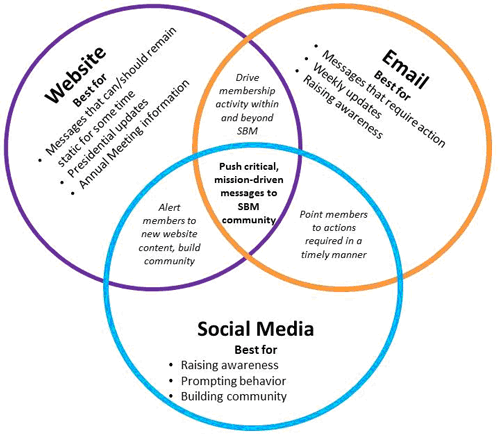
Email Communication
Biweekly broadcast emailsare sent every other Thursday to all SBM members. These emails have the subject line SBM Updates: News, Announcements, and Deadlines, and not surprisingly, these emails are intended to communicate SBM-related information and opportunities that are likely of interest to SBM members (e.g., Annual Meeting abstract deadlines, calls for papers for the SBM journals) in a timely manner.
Once a week on Fridays, SIG digest emailsare sent with the subject line: Weekly Digest: News for SBM SIG Members to any SBMer who is a member of an SBM Special Interest Group (SIG). These once-a-week SIG digest emails replace the multiple emails that used to be sent each week by the national office to all SIG listservs. SIG digest emails typically include position announcements, behavioral medicine news and events, and information about studies and/or funding announcements. To have an item included in a SIG digest email, send it to SBM staff member Ben Stumpf (bstumpf@sbm.org).
The Outlook Newsletteris sent by email three times per year with the subject line: SBM Outlook Newsletter. Outlook is used to keep SBM members up-to-date about the activities of our Councils, Committees, and SIGs.
Finally, and particularly in the months leading up to the Annual Meeting, promotional emails that include important details about the conference are sent to SBM members. These emails include information about Annual Meeting-related deadlines; information about the meeting; and updates on the Meeting program as speakers and sessions are confirmed.
Our Website
The SBM website (https://www.sbm.org) has two components: the public-facing component (unrestricted access) and the members-only component (content only available to members with a username and password).
The public-facing component of our website presents a dynamic, timely, and comprehensive collection of information designed to be a one-stop-shop for all things important in behavioral medicine. The SBM President’s messages over the course of his or her term are featured prominently on the home page, as is activity related to the Annual Meeting, how to become a member of SBM, and newsworthy behavioral medicine events. The resources page of the public-facing website is an especially rich component of SBM’s web presence and our publications page has tables of contents for SBM’s journals (Annals of Behavioral Medicine and Translational Behavioral Medicine) as well as others.
The members-only component of our website is packed with features intended to help SBM members connect to one another in productive ways. Over the past year, we’ve made several updates to the Membership Directory and My Profile areas of the members-only section, including the ability to upload a photo of yourself, your CV, social media information (Twitter handle) and a short biography. Our hope is that these changes enhance the within-society networking that is key to promoting a sense of connectedness among members of SBM.
Social Media
SBM has a Facebook page and two Twitter feeds: one for the Society at large (@BehavioralMed) and one for the SBM President (@SBMPresident). Our Facebook page (more than 500 “likes” and counting!) is used to cross-promote important news that is communicated via our email communication and website. The @BehavioralMed Twitter feed (more than 1200 followers and counting!) also cross-promotes material communicated via other channels, serving to expose followers to relevant behavioral medicine news communicated by other societies and individuals who use Twitter. The @SBMPresident account is used to communicate timely behavioral medicine information at the discretion of the President.
We would welcome any and all feedback about SBM’s communication strategies and will continue to work to serve our members and the public with clear, consistent, and timely communication about the ever-exciting and increasingly relevant work of SBM!
An Update on the Scientific and Professional Liaison Council (SPLC)
Sherri Sheinfeld Gorin, PhD, Chair
The primary mission of the Scientific and Professional Liaison Council (SPLC) is the development of collaborative relationships between SBM and other scientific and professional organizations. We identify those organizations where the mutual goal is to accelerate innovations in behavioral medicine through science, practice, and policy, according to Sara Knight, our former Chair. At present, we have collaborations with more than fifteen organizations, including the Society for Medical Decision Making (SMDM), the American Pain Society (APS), the American Medical Informatics Association (AMIA), the National Communications Association (NCA), the Department of Veterans Affairs, the Patient-Centered Outcomes Research Institute (PCORI), and Computer Human Interaction (CHI). Recently, we collaborated with the American College of Epidemiology to co-invite a behavioral scientist to present at their annual meeting. At present, we are actively developing collaborations with the American College of Sports Medicine (ACSM), the North American Primary Care Research Group (NAPCRG), and are expanding our communications with the Cochrane Collaboration.
The SPLC often works alongside the SIGs, such as Evidence-Based Behavioral Medicine, Health Decision Making, and Physical Activity, to effect these external collaborations. Members of the Council are often active in (or chairs of) the relevant SIGs, and work with the SPLC to identify, develop, grow, and maintain these relationships. The SPLC also supports newly emerging SIGs within SBM such as Health Decision Making (Society for Medical Decision Making) and Military and Veterans' Health (Department of Defense, Veterans Health Administration).
The selection of external organizations with which the SPLC collaborates depends in part upon several factors: SBM Board or SIG interest, overlap in membership, shared aims, a history of associations, and a champion for the linkage. While linkages are developed across SBM, particularly alongside the SIGs, generally, an SPLC champion facilitates them. The SPLC member may also support the ongoing collaborative activities of other SBM members through providing guidance on negotiation with the leaders of the other society or by facilitating linkages with the SBM Board of Directors, the Program Committee, or a relevant SIG.
By linking SBM to relevant external organizations, these collaborations can further expand professional networks for SBM members, or create new opportunities by enhancing communication between SBM and external societies or agencies. Past SPLC collaborations have contributed to joint policy briefs and publications. At our monthly meetings, we discuss strategies to develop and nurture liaison relationships; these approaches will soon be formalized in an SPLC manual of policies and procedures. Importantly, over the coming year, the SPLC plans to work alongside the Membership Council to enhance mentorship of newer/junior SBM members by highlighting linkage skills.
These associations—both formal and informal-- often yield symposia, seminars, and special panel discussions that are presented at the SBM Annual Meeting. At present, we are planning our symposia for the 2014 Annual Meeting in Philadelphia; we welcome your suggestions.
At the 2013 Annual Meeting, the SPLC co-sponsored the following four symposia; Sara Knight, Ph.D. was discussant on the first two of them: (1) a Featured Symposium entitled, “Patient-Centered Outcomes Research Institute (PCORI) and Partners: Improving Patient Outcomes through Behavioral Medicine Research,” chaired by SPLC member Suzanne O’Neill, PhD; with presenters; Thomas K. Houston, MD, MPH, Mary E. Cooley, RN, PhD, and Joe V. Selby, MD, MPH (PCORI). (2) A symposium on “Integration and Innovation for Behavioral Health Interventions in Primary Care,” chaired by SPLC member, Jennifer K. Carroll, MD, with presenters Amireh Ghorob, MPH RYT, Frank deGruy, MD MSFM, Larry Green, MD, and Kurt Stange, MD PhD. (3) “Coordinating Cancer Care: What Have We Learned from Twenty Years of Empirical Studies?” was chaired by Sherri Sheinfeld Gorin, PhD, new SPLC chair, with presenters: Paul Han, MD, MA, MPH, Kathryn McDonald, PhD, David Haggstrom, MD, MAS, and discussant Steven B. Clauser, PhD. (4) “Pain Management in the Primary Care Setting: Utilizing Technology to Meet the Challenges, ”was chaired by Martin Cheatle, PhD, SPLC member, with presenters Kathleen Darchuk, PhD and Mark Vogel, PhD. All of these symposia participants were feted at a delicious dinner with our Scientific and Professional Liaison Council members.
You are welcome to learn about and participate with the SPLC. Our current and proposed members include: Drs. Jennifer Carroll, Martin Cheatle, David Goodrich, Sherri Sheinfeld Gorin, Chair, Paul Jacobsen, Sara Knight, former Chair, Suzanne O'Neill, Erika Waters, and Julie Wright.
We are looking forward to working with you to facilitate external collaborations for our SBM.
Sherri Sheinfeld Gorin, Ph.D.
sherri.gorin@gmail.com
Physical Activity SIG Update
Beth Lewis, PhD, PA SIG Co-Liaison, Outlook Newsletter
Maya Santoro, MA, PA SIG Co-Liaison, Outlook Newsletter
Matthew Buman, PhD, Chair, PA SIG
David Williams, PhD, Co-Chair, PA SIG
The Physical Activity SIG has grown significantly during the past four years. Specifically, it has increased by 94%, from 237 members in 2009 to 459 members in 2013. Almost half of these members are students or trainees. The purpose of the PA SIG is to update SBM members on the latest developments and initiatives related to the physical activity field, provide opportunities for networking, and to serve as a forum for advocating for the physical activity promotion field through various scientific activities.
The PA SIG hosted an informative and productive meeting at the 2013 SBM conference in San Francisco. One of the topics discussed was increasing involvement in public policy. As a result of this meeting, the SIG has assembled a group to talk about potential ways to get involved in policy-related matters. For example, SBM and the PA SIG are affiliate members of the National Physical Activity Plan (http://www.physicalactivityplan.org/). This plan specifically identifies eight sectors that involve physical activity, which presents an excellent opportunity for the PA SIG members to become involved. Another area that has been discussed is integrating PA counseling in clinical settings and in finding ways to advocate for reimbursement models.
Matt Buman will continue another year as the PA SIG co-chair and David Williams has begun his first year as PA SIG co-chair. Dr. Williams’ research focuses on understanding the interplay between affective and cognitive determinants of exercise behavior in the context of exercise promotion programs. Dr. Williams, along with Matthew Buman, plan to spearhead two initiatives. The first involves the creation of a “physical activity science map” of research interests in the PA SIG to identify who is doing what, foster potential collaborations, and create potential mentorship opportunities. A survey will be sent to SIG members to collect the information and this map will be presented to members at SBM in Philadelphia. The hope is that this map will lead to future collaboration and mentorship opportunities. Second, starting at SBM in 2014, there will be an opportunity to participate in “random networking” within the PA SIG. Interested SIG members will submit an available meal-time period (e.g., Thursday or Friday lunch or dinner) and will be randomly grouped with six or seven other SIG members. Groups will likely be stratified by career experience to ensure a mix of senior professionals, junior professionals, postdoctoral trainees, and students. Sharing a meal with other SIG members provides the opportunity to form relationships not easily forgotten, and, over time, expand the number of personal and professional connections within the PA SIG.
The PA SIG is looking forward to another productive year and important PA SIG activities at the upcoming 2014 SBM meeting in Philadelphia!
Update from the SBM Diabetes SIG
Caroline R. Richardson, MD, Diabetes SIG Liaison
The Diabetes Special Interest Group is a forum for Society of Behavioral Medicine members with an interest in the advancement of behavioral and psychological research in diabetes. This year has brought major changes to the SIG leadership team and we would first like to give a big thank you to Korey Hood, Jen Averyt and Todd Doyle for the leadership they have provided for the SIG in the past years. This year's new SIG activities will be coordinated by
Caroline Richardson--Chair (caroli@umich.edu),
Barbara Stetson--Annual meeting coordinator (barbara.stetson@louisville.edu) and
Erin Alexis Olson--Student co-chair (olson29@illinois.edu)
The Diabetes SIG has started the planning and coordination process for next year’s SBM annual meeting. One of our major initiatives will focus on implementation research for diabetes prevention. Type 2 Diabetes is a preventable disease. Multiple large randomized controlled trials have proven that type 2 diabetes can be prevented with lifestyle interventions. The lifestyle change that is required is modest, resulting in a weight loss of just 7% of body weight or about 18 lbs for a 250 lb person. The impact is long lasting with a reduction in diabetes rates seen 10 to 20 years after the intervention ends. The evidence is overwhelming and the benefits are substantial, but most high risk individuals are not aware of their risk status and do not have access to effective programs.
The CDC estimates that about 35% of American adults, or almost 80 million people, have pre-diabetes. Because the scale of the epidemic is so large, individual counseling by a skilled behavioral interventionist can only work for a small minority of those in need. To address problems of scale, cost and limited manpower, group based interventions with one lifestyle coach working with 10 to 20 per-diabetic clients in a group have been tested and shown to be effective. Researchers are also testing automated, internet-mediated programs that can reach large numbers of patients at a low marginal cost or peer or lay-lead diabetes prevention group interventions to further decrease costs and expand reach. While the limited number of skilled behavioral interventionists is an important implementation barrier, there are a number of other implementation road blocks that need to be overcome to reduce the incidence of diabetes.
Traditional models of one-on-one counseling will need to be replaced by more scalable options including group based interventions, automated internet-mediated options and peer delivered interventions that can be delivered at scale. The CDC has launched the National Diabetes Prevention Program (NDPP, http://www.cdc.gov/diabetes/prevention/). Materials and training to support diabetes prevention program development are available for free through the NDPP web site. Additionally, institutions that deliver diabetes prevention programs that are consistent with national guidelines can register their programs for recognition through the NDPP.
At the next SBM Annual Meeting, the Diabetes SIG hopes to highlight some of the implementation innovations lead by our members across the country. If you are interested in presenting at the next SBM annual meeting on the topic of diabetes prevention implementation or any other topic related to diabetes, contact a member of the SIG leadership team or post a message to our list serve.
We hope that you will also post information on jobs, news, and updates of interest to our SIG. Send a message to diabetes@list.sbm.org to post.
Evidence-Based Behavioral Medicine SIG Update
Quinn Neugebauer, MA, EBBM SIG Outlook Student Liaison
The Evidence-Based Behavioral Medicine Special Interest Group (EBBM_SIG) is excited to report on our activities at the 34th Annual Meeting of the Society of Behavioral Medicine. We had a terrific turnout of SIG members contributing to our mission of advancing evidence-based medicine at our SIG-sponsored events. Though it is hard to summarize everything, here are some of the highlights:
- Sherri Sheinfeld Gorin, PhD, ended her term as EBBM SIG Co-chair. We are so extremely grateful for Dr. Gorin’s deep commitment to and hard work for our SIG. Thank you for all of your contributions and we look forward to continued collaborations with you!
- Amy Janke, PhD, was elected as the new incoming Co-chair. Alongside Co-chair Karen Oliver, PhD, Dr. Janke will be working in conjunction with our committee leaders on a number of the SIG’s initiatives and programming for next year’s Annual Meeting.
 Kristen Emory, MA, won the EBBM SIG student award for her work on receptivity to tobacco-related messages and youth smoking. Ms. Emory is a doctoral candidate in health behavior at the joint doctoral program between the University of California, San Diego and San Diego State University. (Pictured: Sherri Sheinfeld Gorin, PhD, Kristen Emory, MA, and Amy Janke, PhD)
Kristen Emory, MA, won the EBBM SIG student award for her work on receptivity to tobacco-related messages and youth smoking. Ms. Emory is a doctoral candidate in health behavior at the joint doctoral program between the University of California, San Diego and San Diego State University. (Pictured: Sherri Sheinfeld Gorin, PhD, Kristen Emory, MA, and Amy Janke, PhD)- At our SIG Business Meeting, Russell Glasgow, PhD, gave a presentation on implementation science at NCI. He suggested the need for different types of health research, models and methods, and encouraged an approach to implementation science that is more relevant, and translates more rapidly, to stakeholders.
- We sponsored a pre-session on "Translating the Evidence into Practice: Challenges and Implementation" led by Joanna Buscemi, PhD, Bonnie Spring, PhD, and Michael Coons, PhD. The pre-session provided interactive learning about the five-steps of the evidence-based practice process, how systematic reviews and treatment guidelines inform evidence-based practice, training in the extraction of research findings using the “3 circles” approach, and the resolution of implementation challenges in applying systematic reviews to policy and practice.
- We co-sponsored a symposium with the Scientific and Professional Liaison Council and the Health Policy Committee titled “Coordinating Cancer Care: What Have We Learned from Twenty Years of Empirical Studies?" The symposium entailed a description of the state-of-the-science in cancer care coordination based on relevant empirical studies published between 1990 and 2012. Presenters included Sherri Sheinfeld-Gorin, PhD, Kathryn McDonald, PhD, David Haggstrom, MD, and Steven Clauser, PhD.
Thank you to our SIG members who made our presence at this meeting such a success. We welcome your further involvement with the SIG and look forward to seeing you the next Annual Meeting!
The Military and Veterans’ Health SIG Continues to Build Momentum
Michael A. Glotfelter, MS, Military and Veterans’ Health SIG Co-Chair
The 2013 Annual Meeting was productive for the Military and Veterans' Health Special Interest Group (MVH SIG), which celebrated its second year in SBM. The MVH SIG’s primary goal is to promote behavioral health within the unique systems of the Department of Defense (DoD) and the Department of Veterans Affairs (VA). At the San Francisco meeting, the SIG sponsored two noteworthy programming events including a dynamic session on expanding behavioral medicine career options in VA and DoD as well as a symposium on the use of mobile applications to support patient self-management for mental and physical health conditions.
Both the annual business meeting and evening social event were designed to foster a partnership between the interdisciplinary SBM professionals who work in the VA/DoD healthcare systems. At this year’s business meeting, David Goodrich, EdD, was elected to serve a two-year term representing the VA and Captain Denise Martin-Zona, PhD was elected to serve a two-year term as the Communications Officer. Michael Ann Glotfelter, PsyD, will finish the remaining year of her two-year term representing the DoD.
The SIG business meeting focused on building momentum from year one with particular emphasis on soliciting members’ opinions regarding strategies to increase the SIG’s visibility in SBM between annual meetings. One proposed initiative would seek access from VA Health Services Research & Development service to link both SIG and non-SIG members to VA Cyber Seminars on behavioral medicine research presentations ranging from pain management to implementation science. In addition, the SIG will attempt to better advertise the many outstanding career and education opportunities available in VA and DoD through the listserv.
Leveraging the benefits of SBM membership, the SIG will aim to foster professional social networking. To accomplish this aim, the SIG will explore opportunities to support early career researchers and professionals by connecting them with mentors and training opportunities. In light of the rapid transformation of DoD/VA healthcare services, it is important to elevate the importance of behavioral medicine in Requests for Applications (RFAs) for DoD/VA-sponsored research through ideas and collaborations developed through the SIG. Finally, based on the success of this year’s social event at a local Asian fusion restaurant, the SIG will also plan to make a social get-together an essential annual meeting event to build long-term relationships among SIG members.
In preparation for next annual meeting in Philadelphia, the SIG officers are seeking programming ideas to sponsor from members. We strive to provide programming that is appealing to our members, so please feel free to offer suggestions on topics of interest to you. Feedback from this year’s business meeting advocated for a cross-SIG pre-conference workshop that would focus on practical application. The interdisciplinary nature of the MVH SIG membership especially lends itself to cross-SIG programming.
The MVH SIG invites all SBM members to join our commitment to promoting research, prevention, policy development, and education with the goal of translating evidence-based behavioral medicine interventions into clinical care for all Veterans, military members, and their families. We invite any interested members to join the MVH SIG by contacting any of the board members; David Goodrich (David.Goodrich2@va.gov), Michael Ann Glotfelter (michael.glotfelter.1@us.af.mil), or Denise Martin-Zona (denise.martin_zona.2@us.af.mil).
Issues in Women’s Health: Cardiovascular Disease
Christina Psaros, PhD, Women’s Health SIG Co-Chair
Valessa St. Pierre, MS, Women’s Health SIG Co-Chair
Cardiovascular disease (CVD) is the leading cause of death for women in the United States, accounting for one out of every four female deaths.1 Rates of CVD among African American women are almost 60% higher than those observed in white women.2 Despite research on the multiple lifestyle, environmental and biologic factors contributing to this disparity, these racial/ethnic differences in CVD are not yet well understood.2, 3
One psychosocial factor believed to be important for CVD-risk among women, and black women in particular, is the stress associated with filling multiple social roles.4 Very few studies have examined multiple role-related stress and CVD and whether there are racial/ethnic differences in role perceptions and CVD-risk. A recent article published in the Annals of Behavioral Medicine, a publication of the Society of Behavioral Medicine, aimed to fill this gap. Janseen et al.5 examined the associations between multiple social roles and a subclinical precursor of CVD in a sample of middle-aged black and white women.
Subjects were 104 black and 232 white women (ages 42-52 years of age) from The Study of Women’s Health Across the Nation (SWAN) study, a multi-site, multi-ethnic longitudinal study of women transitioning through menopause. In order to assess their sociodemographic and CVD risk factors, women completed baseline and annual exams which included questionnaires, anthropometry and a blood draw. A woman’s fulfillment of specific social roles was assessed using a short questionnaire adapted from the Multiple Role Questionnaire.6 Four roles (spouse, parent, employee, caregiver) and the stress associated with occupying each role were assessed using a five-point scale. The amount of calcium in the coronary arteries was assessed using an electron beam and calcium progression was defined as an increase of ≥ 10 Agatston units. Covariates included age, highest educational degree, smoking status, hormone therapy use, menopausal status, blood pressure, social support, depressive symptoms and body mass index. Data were analyzed using relative risk regression models, which summarized the association between progression of coronary calcium and the participant’s attributes and the number of roles, average role stress, average role rewards and covariates.
Janseen et al.5 found that rewarding roles may be beneficial for black women. Specifically, they found that although white women reported higher rewards from their multiple social roles than their black counterparts, black women showed cardiovascular benefits from social role rewards. Further, among black women only, higher social role rewards were significantly related to lower progression of coronary artery calcium even after adjusting for several covariates including blood pressure and body mass index. Blacks reported fewer social roles but similar social role stress as whites however social role number and stress were unrelated to coronary artery calcium progression.
Hence, perceived rewards from multiple rewarding social roles may be a protective psychosocial factor for the progression of coronary calcium among black women. Given that black women are at a high risk of developing CVD, future research should examine this and other protective psychosocial factors.
The study discussed above serves to highlight the unique needs of African American women living with CVD and highlights the importance of social roles as they relate to CVD. The study illustrates a primary goal of the Women’s Health special interest group, to support the advancement of women’s issues in behavioral medicine.
Emily Russell, MPH
Member, Women’s Health SIG
Doctoral Candidate, Behavioral Sciences and Health Education Department
Emory University
edauria@emory.edu
References
- Kochanek KD, Xu, J.Q., Murphy, S.L., Minino, A.M., Kung, H.C. Deaths: Final data for 2009. National Vital Statistics Reports. 2011;60(3).
- Gillum RF, Mussolino, M.E., Madans, J.H. Coronary heart disease incidence and survival in African-American women and men. The NHANES I epidemiologic follow-up study. . Annals of Internal Medicine. 1997;127:111-118.
- Albert MA. Receipt of high-quality coronary heart disease care in the United States: All about being black or white: Comment on "Racial differences in admissions to high quality hospitals for coronary heart disease". Archives of Internal Medicine. 2010;170:1216-1217.
- Low CA, Thurston, R.C., Matthews, K.A. Psychosocial factors in the development of heart disease in women: Current research and future directions. Psychosomatic Medicine. 2010;72(842-854).
- Janseen I, Powell, L.H., Jasielec, M.S., Matthews, K.A., Hollenberg, S.M., Sutton-Tyrrell, K., Everson-Rose, S.A. Progression of coronary artery calcification in black and white women: do the stresses and rewards of multiple roles matter? . Annals of Behavioral Medicine. 2012;43(1):39-49.
- Stephens MAP, Franks, M.M., Townsend, A.L. Stress and rewards in women's multiple roles: The case of women in the middle. Psychology and Aging. 1994;9:45-52.
Institute of Medicine Roundtable on Population Health Improvement: Opportunities for Behavioral Medicine
Lila J. Rutten, PhD, MPH
Jennifer L. St. Sauver PhD, MPH

Although the U.S. spends more on medical care than any other industrialized nation, its citizens suffer poorer health and live shorter lives than those living in comparable countries. This wealth-health paradox highlights the complex interactions among environmental, social, and behavioral factors that determine health. Building upon mounting evidence documenting the multi-level determinants of health outcomes, the Institute of Medicine recently established the Roundtable on Population Health Improvement. Roundtable leaders have envisioned the creation of an expanded multi-sector health system beyond traditional medical systems to promote health equality, increase life expectancy, and improve quality of life. To achieve these goals, the Roundtable aims to disseminate knowledge and initiate multi-sector efforts to improve population health. Broadly, the Roundtable will explore creative solutions to improve population health through: expanded reimbursement models that include coverage of non-clinical, population-level interventions; integration of primary care and public health; and engagement of a diversity of community organizations in efforts to improve population health.
The Population Health Improvement Roundtable is co-chaired by Dr. George Isham, Senior Advisor at HealthPartners, Inc. and Dr. David Kindig, Professor Emeritus of Population Health Sciences in the School of Medicine at the University of Wisconsin, Madison. Members of the Roundtable comprise a multidisciplinary team including experts from education, public health, clinical medicine, the social sciences, and the business sector. A full Roundtable member roster is available at: www.iom.edu/pophealthrt. The Roundtable will convene three to six public workshops each year through 2015 in an effort to inform and energize an enduring population health improvement movement. Workshop themes are member driven, and will address a range of topics relevant to population health improvement including integrating primary care and public health, population health communication strategies, and the role of education in population health. The first Workshop of the Roundtable on Population Health Improvement, took place on June 13, 2013, at the National Academy of Sciences with a series of presentations and discussions focused on the Population Health Implications of the Affordable Care Act. Workshop themes for the remainder of 2013 include Health in All Policies and Practices (September 19, 2013 in Washington DC) and Population Health Goals and Metrics (December 5, 2013 in Irvine, CA).
The ecological conceptualization of health determinants and outcomes and the multidisciplinary approach of the Roundtable align with the Society of Behavioral Medicine mission to promote research on environmental, social, and behavioral influences on health, and translation of research to advance the health and welfare of communities and populations. The Behavioral Science focus on behavioral, cognitive, social, and environmental factors that affect health and quality of life across the lifespan can inform efforts to improve population health. A window of opportunity exists for behavioral scientists to bring to bear methodological and content expertise to inform the emerging population health improvement movement. SBM members who may be interested in participating the public workshops or learning more about the IOM Population Health Improvement Roundtable can find out more at: www.iom.edu/pophealthrt.
Newest Articles from Annals of Behavioral Medicine and Translational Behavioral Medicine
SBM's two journals, Annals of Behavioral Medicine and Translational Behavioral Medicine: Practice, Policy, Research (TBM), continuously publish articles online, many of which become available before issues are printed.
SBM members who have paid their 2013 membership dues are able to access the full text of all Annals and TBM articles via the SBM website by following the steps below.
- Go to the Members Only section of the SBM website: https://www.sbm.org/membership/members
- Log in with your username and password
- Click on the Journals link (listed fourth in the list of Member Benefits)
- Click on the title of the journal which you would like to electronically access
To check if you are a current member of SBM, or if you are having trouble accessing the journals online, please contact the national office at info@sbm.org or 414-918-3156.
The three most recently published Annals and TBM articles online are listed below.
Annals of Behavioral Medicine
Moderating Effect of Socioeconomic Status on the Relationship between Health Cognitions and Behaviors
Authors: Mark Conner BSc, PhD, Rosemary McEachan BSc, PhD, Cath Jackson BSc, PhD, Brian McMillan BSc, PhD, MD, Mike Woolridge BSc, DPhil, Rebecca Lawton BA, PhD
Abstract: Background: There is an established link between socioeconomic status (SES) and performance of health behaviors with more health protective and fewer health-risking behaviors in higher SES groups.
Purpose: This research is novel in testing the moderating effect of SES on the relationship among intention, self-efficacy, and subsequent behavior.
Methods: Effects were tested on data from three prospective correlational studies examining smoking initiation in adolescents (N = 826), breastfeeding in primiparous women (N = 202), and physical activity in working adults (N = 509).
Results: Despite examining different behaviors, samples, time intervals, and measures of SES, each study showed significant interactions between intention and SES in predicting behavior. In all three tests, the intention–behavior relationship was attenuated among individuals from lower SES groups. No moderation effects of SES were found for self-efficacy.
Conclusions: The intention–health behavior relationship can be attenuated in lower SES samples. This finding may contribute to our understanding of SES differences in health behaviors.
The Influence of Perceived Stress on the Onset of Arthritis in Women: Findings from the Australian Longitudinal Study on Women’s Health
Authors: Melissa L. Harris B.A., Deborah Loxton Ph.D, David W. Sibbritt Ph.D, and Julie E. Byles Ph.D
Abstract: Background: Psychosocial factors are considered as risk factors for some chronic diseases. A paucity of research exists surrounding the role of perceived stress in arthritis onset.
Purpose: Perceived stress as a risk factor for arthritis development was explored in an ageing cohort of Australian women.
Methods: This study focused on 12,202 women from the 1946–1951 cohort who completed the Australian Longitudinal Study on Women’s Health surveys in 2001, 2004 and 2007. Longitudinal associations were modelled, with and without a time lag.
Results: Findings from the multivariate time lag modelling, excluding women with persistent joint pain, revealed that perceived stress predicted the onset of arthritis, with women experiencing minimal and moderate/high stress levels having a 1.7 and 2.4 times greater odds of developing arthritis 3 years later, respectively (p’s < 0.001).
Conclusion: Chronically perceiving life as stressful is detrimental to future health. The findings provide support for perceived stress to be considered alongside other modifiable risk factors.
Does Exposure to Stressors Predict Changes in Physiological Dysregulation?
Authors: Dana A. Glei Ph.D., Noreen Goldman D.Sc., Chih-Hsun Wu Ph.D., and Maxine Weinstein Ph.D.
Abstract: Background: The allostatic load framework implies that cumulative exposure to stressors results in multi-system physiological dysregulation.
Purpose: The purpose of this study was to investigate the effect of stress burden on subsequent changes (2000–2006) in physiological dysregulation.
Methods: Data came from a population-based cohort study in Taiwan (n = 521, aged 54+ in 2000, re-examined in 2006). Measures of stressful events and chronic strain were based on questions asked in 1996, 1999, and 2000. A measure of trauma was based on exposure to the 1999 earthquake. Dysregulation was based on 17 biomarkers (e.g., metabolic, inflammatory, neuroendocrine).
Results: There were some small effects among men: chronic strain was associated with subsequent increases in dysregulation (standardized β = 0.08, 95 % CI = 0.01 to 0.20), particularly inflammation; life events were also associated with increased inflammation (β = 0.10, CI = 0.01 to 0.26). There were no significant effects in women.
Conclusions: We found weak evidence that stress burden is associated with changes in dysregulation.
Translational Behavioral Medicine
Design and evaluation of theory-informed technology to augment a wellness motivation intervention
Authors: Siobhan McMahon MPH, PhD, GNP-BC, Mithra Vankipuram PhD, Eric B Hekler PhD, and Julie Fleury PhD, FAAN
Abstract: Integrating mobile technology into health promotion strategies has the potential to support healthy behaviors. A new theory-informed app was designed to augment an intervention promoting wellness motivation in older adults with fall risk and low levels of physical activity. The app content was evaluated for clarity, homogeneity, and validity of motivational messages; both the app and device were evaluated for acceptability and usability. The initial evaluation included nine adults (mean age, 75); four of whom also assessed the app’s sensing abilities in the field. As part of an intervention feasibility study, 14 older adults (mean age, 84) also provided a follow-up evaluation of app usability. Evaluation participants assessed the app as valid, usable, acceptable, and able to sense most reported free-living activities, and provided feedback for improving the app. Design processes illustrate methodologic and interpretive efforts to operationalize motivational content in a theory-informed app promoting change in physical activity behavior.
School factors as barriers to and facilitators of a preventive intervention for pediatric type 2 diabetes
Authors: William J. Hall MSW, Margaret Schneider PhD, Deborah Thompson PhD, Stella L. Volpe PhD, Allan Steckler DrPH, John M. Hall BS, and M. Randall Fisher BS, RN
Abstract: School-based interventions are essential to prevent pediatric obesity and type 2 diabetes. School environmental factors influence implementation of these interventions. This article examines how school factors acted as barriers to and facilitators of the HEALTHY intervention. The HEALTHY study was a cluster-randomized trial of a multicomponent intervention implemented in 21 schools. Interview data were analyzed to identify barriers and facilitators. Barriers included teacher frustration that intervention activities detracted from tested subjects, student resistance and misbehavior, classroom management problems, communication equipment problems, lack of teacher/staff engagement, high cost and limited availability of nutritious products, inadequate facility space, and large class sizes. Facilitators included teacher/staff engagement, effective classroom management, student engagement, schools with direct control over food service, support from school leaders, and adequate facilities and equipment. Contextual barriers and facilitators must be taken into account in the design and implementation of school-based health interventions.
A systematic review of eHealth cancer prevention and control interventions: new technology, same methods and designs?
Authors: Michael A Sanchez MPH, CHES, Borsika A Rabin MPH, PhD, Bridget Gaglio PhD, MPH, Michelle Henton MA, M Khair Elzarrad PhD, MPH, Peyton Purcell MPH, CPH, and Russell E Glasgow PhD
Abstract: There has been a recent surge of eHealth programs in cancer and other content areas, but few reviews have focused on the methodologies and designs employed in these studies. We conducted a systematic review of studies on eHealth interventions on cancer prevention and control published between 2001 and 2010 applying the Pragmatic Explanatory Continuum Indicator Summary (PRECIS) criteria and external validity components from the Reach Effectiveness Adoption Implementation Maintenance (RE-AIM) framework. We identified 113 studies that focused on cancer prevention and control of eHealth interventions. Most studies fell midway along the explanatory/pragmatic trial continuum, but few reported on various practical feasibility criteria for translation. Despite vast interest in cancer eHealth and the applied nature of this field, few studies considered key external validity issues. There is a need for use of alternative pragmatic study designs and transparent reporting of external validity components to produce more rapid and generalizable results.
Honors & Awards
This article showcases some of SBM members' recent honors and awards. If you would like to have your honor or award featured in the next issue, please forward the details of your achievement to William J. Sieber, PhD, Outlook Editor. Congratulations to all of the following members.
Jill E. Bormann, PhD, RN
Jill E. Bormann, PhD, RN, has been selected as one of 172 nurse leaders for induction as a Fellow during the Academy’s 40th annual meeting on October 19, 2013, in Washington, DC. The Academy is composed of more than 2,000 nurse leaders in education, management, practice, policy, and research. Selection is based, in part, on the extent the nominee’s nursing career has influenced health policies and the health and wellbeing of all. Dr. Bormann’s contributions are based on her research and dissemination of the Mantram Repetition Program, a mind-body-spiritual intervention for symptom management.
Matthew P. Buman, PhD, and Eric B. Hekler, PhD
Matthew P. Buman, PhD, and Eric B. Hekler, PhD, won an award at last year's CHI conference for their paper, Mind the theoretical gap: interpreting, using, and developing behavioral theory in HCI research. Specifically, it was a Best Paper award, meaning that of the approximately 2,000 articles submitted, this paper was ranked among the top 1%.
Diane Ehlers, MA
Diane Ehlers, MA received the Best Graduate Poster award at the University of Nebraska at Omaha Student Research and Creative Activity Fair.
Jennifer A. Linde, PhD
Jennifer A. Linde, PhD was elected as a Fellow of the Obesity Society as of February 18, 2013. She was also appointed Treasurer of the International Society for Behavioral Nutrition & Physical Activity as of May 2013.
Tracey A. Revenson, PhD
Tracey A. Revenson, PhD has been awarded the Nathan Perry Career Service Award in Health Psychology from the Division of Health Psychology of APA. This award honors individuals who have made significant contributions to Division 38 and the advancement of health psychology as a field, nationally and internationally.
Elena Salmoirago-Blotcher, MD, PhD
Elena Salmoirago-Blotcher, MD, PhD, received the Faculty Scholar Award – Program in Medicine and Religion, MacLean Center for Clinical Medical Ethics and the Divinity School, University of Chicago for a prospective study of the association between spirituality, burnout and psychological wellbeing in emergency room and intensive care physicians.
Classified Advertising
Deadline and Rates
To advertise in the Fall 2013 edition of Outlook, please supply ad copy to the SBM National Office. Please contact the National Office for additional information.
Contact:
Benjamin Stumpf
Program Manager
Society of Behavioral Medicine
555 East Wells Street, Suite 1100
Milwaukee, WI 53202-3823
Phone: (414) 918-3156
Fax: (414) 276-3349
E-mail: bstumpf@sbm.org
BOARD OF DIRECTORS
Officers
Dawn K. Wilson, PhD
President
Lisa M. Klesges, PhD
President-Elect
Alan J. Christensen, PhD
Past-President
Michael A. Diefenbach, PhD
Secretary/Treasurer
Gary G. Bennett, PhD
Member Delegate
Sherry L. Pagoto, PhD
Member Delegate
Amy L. Yaroch, PhD
Member Delegate
Council Chairs
Nicole Zarrett, PhD
Education, Training & Career Development Chair
Monica L. Baskin, PhD
Membership Chair
Alan M. Delamater, PhD
Publications & Communications Chair
Sherri Sheinfeld Gorin, PhD
Scientific & Professional Liaison Chair
Claudio R. Nigg, PhD
Special Interest Groups Chair
Committee Chairs
Laura L. Hayman, RN, PhD, FAAN
Awards Chair
Geoffrey C. Williams, MD, PhD
Development Chair
Ken Resnicow, PhD
Evidence-Based Behavioral Medicine Chair
Michael A. Diefenbach, PhD
Finance Chair
Marian L. Fitzgibbon, PhD
Health Policy Chair
Alan J. Christensen, PhD
Nominating Chair
Elliot J. Coups, PhD
Program Chair
Lila J. Rutten, PhD
Program Co-Chair
Melissa A. Clark, PhD
Program Support Chair
Editors
Christopher R. France, PhD
Annals Editor
Bonnie Spring, PhD, ABPP
Translational Behavioral Medicine Editor
William J. Sieber, PhD
Outlook Editor
Ellen Beckjord, PhD
Website Editor
Please send Outlook correspondence to:
William J. Sieber, PhD
Editor, SBM Outlook
E-mail: bsieber@ucsd.edu
Guidelines for Articles submitted to Outlook
- Articles should be no longer than 500 words, plus up to 10 references.
- Please submit only original articles, not articles that have been previously published in another organization's newsletter or bulletin.
- The Outlook editor may edit articles to fit the format of the newsletter, or defer articles to another issue based on space limitations. The submitting author(s) will be informed, prior to publication, and will be sent a copy of any edited article for approval or withdrawal.
- Submitted articles may be reviewed by the Publications and Communications Committee Chair and, potentially, additional SBM Board members to determine appropriateness for publication and/or length.
![]()
SBM National Office
555 East Wells Street, Suite 1100,
Milwaukee, WI 53202-3823
Phone: (414) 918-3156 • Fax: (414) 276-3349 •
E-mail: info@sbm.org • www.sbm.org
Editor: William J. Sieber, PhD
Managing Editor: Alicia Sukup
You have received this message because you have had previous contact with the Society of Behavioral Medicine. If you do not wish to be included in our mailing list, please forward this message to info@sbm.org.



